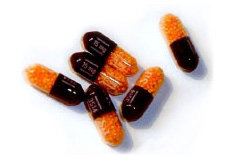Amphetamine Abuse and Addiction

When you’re looking at the abuse of amphetamines around the world, you should realize that amphetamine is both a specific drug and the name of a class of drugs. The class of amphetamine-type stimulants includes:
- Methamphetamine
- Adderall
- MDMA (technical name: 3,4-Methylenedioxymethamphetamine, street name Ecstasy)
- Prescription drugs Dexedrine and Dextrostat, forms of dextroamphetamine, used for weight loss and to produce alertness
- Desoxyn, the prescription form of methamphetamine
- Benzedrine, a prescription drug distributed to troops as far back as 1942
In the United States and Southeast Asia, methamphetamine abuse is currently more prevalent. Amphetamine was a popular drug of abuse in the U.S. in the 1960s and 1970s but then fell from favor. Currently, amphetamines are a far more popular drug of abuse outside the U.S.
While amphetamines may not get a lot of media attention, the United Nations’ World Drug Report for 2010 states that while internationally cocaine and heroin use is stable, the number of users of amphetamine-type stimulants may exceed the number of opiate and cocaine users combined.
Amphetamine’s Back Story
Amphetamine’s origins go back to the Chinese herb Ma Huang which contains the stimulant ephedra, used to treat bronchial problems as well as colds, headaches and fevers. Amphetamine was synthesized in 1887 in a German lab. No real use was found for the drug until the 1930s when its ability to improve fatigue was noted. As Benzedrine, it was handed out to World War II pilots and soldiers on all sides of the conflict.

In the U.S. in the 1960s, it became a popular drug of abuse, with those overindulging in the drug being referred to as “speed freaks.” The drug caused euphoria, loss of appetite, nausea, mood swings, talkativeness, and insomnia. Some amphetamine abusers also began to experience paranoia, panic attacks, and hallucinations, even seizures. As problems with abuse increased, controls over manufacturing and distribution were also increased and the drug lost favor in the U.S.
In Europe in the 1970s, illicit manufacture of methamphetamine began in Czechoslovakia in small kitchen labs. Most of the abusers were injection drug users. By the late 1980s, most of the addicts in the region were addicted to alcohol or pervitin, as methamphetamine was called in that area. Since the 1990s, abuse of amphetamine over most of Europe has been lower than the abuse of methamphetamine, with some exceptional pockets.
A Worldwide Abuse Problem
At this time, world estimates for abuse of this class of drug vary wildly. The UN can zero in on the number of users no closer than to say that they number between 13.7 million and 52.9 million per year (ages 15-64). Other countries have followed the lead of the United States by restricting the sale of pseudoephedrine-containing cold medication, particularly the UK and Czechoslovakia, in an attempt to curtail methamphetamine production.
As labs to produce synthetics like amphetamines can be established almost anywhere, there is no need for long trafficking routes as is the case with cocaine and heroin. In most areas, seizures of amphetamine tend to be lower than they might otherwise be, as the product can be manufactured close to market, meaning there is less time and opportunity to seize the illicit cargo. Seizures of precursor chemicals, which may have a long trip to the manufacturing site, are more likely to occur.
Amphetamine Abuse in Europe and Asia
In 2008, more than 80 percent of all the amphetamine production facilities that were seized were found in Europe. Still, far more tonnage of amphetamines was found in western Asia (14 tons compared to Europe’s 8 tons). Most of Asia’s amphetamines were in the form of tablets referred to as Captagon (the brand name of a discontinued prescription drug). Captagon contains between one percent and 16 percent amphetamine and is involved in increasing need for treatment of amphetamine addiction in the Near and Middle East. But not a single amphetamine-production lab was found in the Near and Middle East countries. Far more sophisticated labs are required to synthesize amphetamine than methamphetamine.
Most of the production capacity in Europe was concentrated in the Netherlands, Poland and Belgium. In all, 39 sites were found in 2008 that were producing amphetamines. That same year, Czech Republic was home to hundreds of sites found to be manufacturing methamphetamine, but only 4 kilograms of finished methamphetamine were seized in this country.
It’s estimated that about 12 million Europeans between the ages of 15 and 64 have abused amphetamines at one point in their life. A survey of young Europeans showed that between 0.1 percent and 3.2 percent were abusing amphetamines, depending on the country. But when the surveys turn their focus to Europeans who frequent nightlife settings, the usage figures skyrocketed: 5 percent in one country and all the way to 69 percent in another.
In stark comparison to amphetamine use in Europe, Asia was estimated to have between 4.4 and 37.9 million abusers of this class of drug. Increases were reported by 13 out of the 29 countries that are members of the UN, including Bangladesh, Indonesia, Japan, Mongolia, China, Myanmar, Thailand and Vietnam. In East and Southeast Asian countries, the Philippines, Thailand and Laos have the highest rates of abuse of amphetamines.
Dangerous Effects of Amphetamines

Most people who abuse amphetamines take higher doses than are ever prescribed medically. They are therefore more likely to suffer the effects the drug can cause, such as tremors, anxiety, panic attacks, insomnia, confusion, dizziness and aggression. Some people may experience psychotic symptoms and a few may suffer strokes. Suicide is a risk when the amphetamine user finally crashes, as it’s normally accompanied by severe depression. The use of amphetamines with alcohol, opioids or cocaine can accentuate amphetamine’s toxicity and cause even more severe effects. Also, the heavier the use, the more likely the abuser will suffer serious effects.
As with many other drugs, amphetamine use is often accompanied by a risky lifestyle. Sexually transmitted diseases such as HIV and blood-borne diseases such as hepatitis C occur more frequently in amphetamine abusers than the general population. Amphetamines constitute a major cause of treatment admissions in the Nordic countries (both amphetamine and methamphetamine), the Czech Republic (mostly methamphetamine), Slovakia, Hungary, Latvia and Belgium.
- http://www.unodc.org/documents/wdr/WDR_2010/ World_Drug_Report_2010_lo-res.pdf
- http://www.paho.org/english/DBI/es/09-TEMAS-Luna.pdf
Between 1999 and 2008, there was a huge shift in the proportions of ATS (amphetamine-type stimulants) that were seized. In 1999, only 8 percent of ATS drugs seized were amphetamines and 69 percent were methamphetamine. By 2008, the proportion of amphetamine seized was up to 47 percent and meth was down to just 38 percent.
Since amphetamine-type drugs can be synthesized anywhere that chemicals can be shipped, there are no restrictions on its manufacture and thus no restrictions on the supply to any corner of the world. Recent years have seen increases in the seizure of amphetamine-type stimulants in West and Central Africa. The eradication of this drug can only be effected through the tracking and seizure of precursor chemicals and the arrest of those who try to profit from the addiction and death caused by the drug.
The Narconon drug rehabilitation program has helped many people get off different types of amphetamines. If you know someone who is addicted to amphetamines, please contact a Narconon drug rehabilitation counselor immediately. Their life could depend on it.
 ®
®